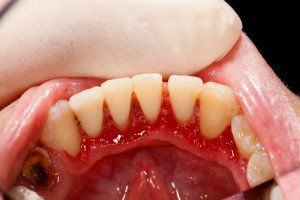Periodontal Disease: Symptoms And Treatment
 Many individuals today have some degree of periodontal disease despite the fact that they may not even realize it or see any recognizable symptoms. During your initial consultation at with your dentist at Community Dental Group, they will discuss your oral health in detail after performing a routine examination. During the exam, there are certain things that they will typically check for including:
Many individuals today have some degree of periodontal disease despite the fact that they may not even realize it or see any recognizable symptoms. During your initial consultation at with your dentist at Community Dental Group, they will discuss your oral health in detail after performing a routine examination. During the exam, there are certain things that they will typically check for including:
- Bleeding, firmness, pocket depth, and swelling of the gums
- Jawbone issues such as a breakdown in the bone that surrounds your teeth
- Proper teeth alignment, sensitivity, and tooth loosening or movement
Just keep in mind that the person who is the most qualified to determine whether or not you have periodontal disease is your dentist or periodontist. Only these professionals can identify the condition and how far it has progressed.
Symptoms To Watch For
The interesting fact about periodontal disease is that it can progress without being painful and produce few if any noticeable signs or symptoms. This is also true even after the condition has progressed into its later stages. Despite these subtleties, there are certain warning signs that may point to the condition existing. Symptoms usually include:
- Changes in biting configuration (the way your teeth align) or the way partial dentures fit
- Deep pocket formation between your gums and teeth
- Gum bleeding during tooth brushing and afterwards
- Gums that are red, swollen, and tender
- Having a bad taste in your mouth
- Persistent halitosis (bad breath)
- Receding gum lines
- Teeth that are loosening or shifting
You may still be afflicted with some degree of periodontal disease even though the above symptoms are not apparent. Additionally, you may notice that your condition only affects certain teeth such as your bicuspids or one of your wisdom teeth (3rd molars).
General Treatment Options
At Community Dental Group, we offer different treatment options for periodontal disease, all of which have the following goals:
- re-attachment of healthier gums to your teeth
- reduced risk of infection, pocket depth, and swelling
- stopping the progression of the disease
The treatment option that we recommend is usually determined by how far the disease has progressed, but it may also depend on other factors such as your overall health and response to prior treatment. Non-surgical therapies for controlling the growth of bacteria as well as certain restorative surgical procedures that enhance tissue support are just two of the many treatment options available for periodontal disease.